Humans are driven by the instinct to explore, leading them to sail the seas and reach global ports. Arianna Bionda exemplifies this passion and drive, having transformed her love for sailing and sustainable design into a successful career.
She is a Politecnico di Milano researcher in Yacht Design, an interdisciplinary field that integrates architecture, interior design, and engineering – Politecnico’s three core disciplines. Her work delves into the future of nautical design, from pioneering technologies to sustainable materials, to make sailing more efficient and environmentally friendly.
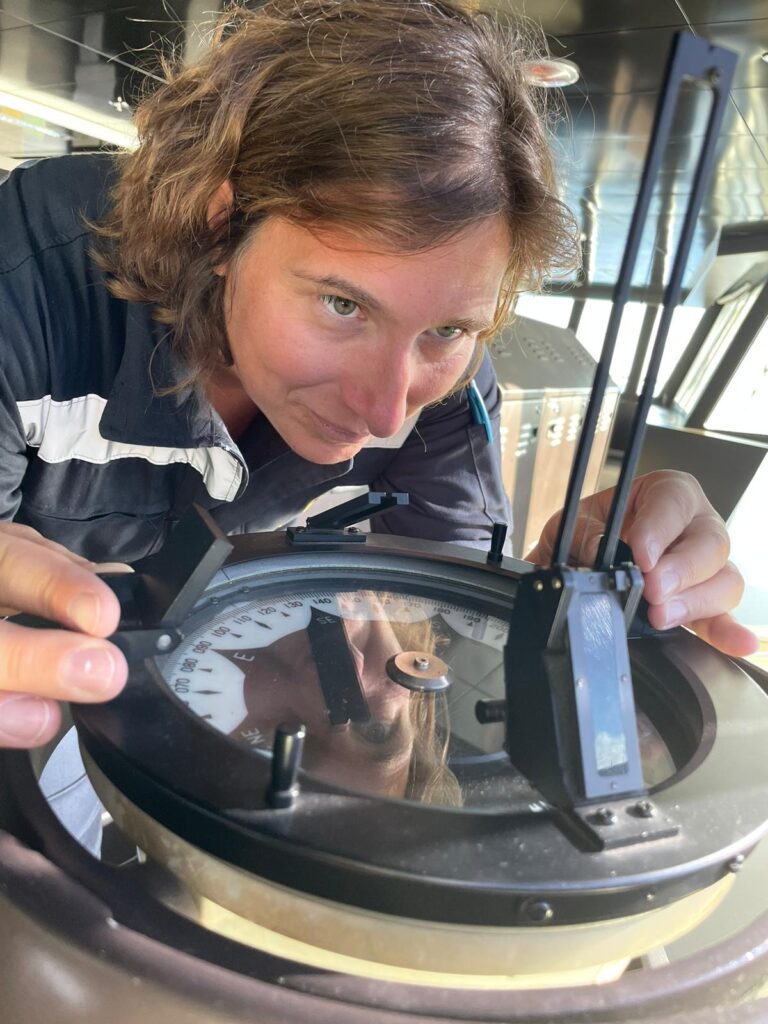
How did your boating passion begin?
When I was 13, I started some sailing introductory courses, which eventually led to experiences on cabin cruisers and participation in regattas. I have always been drawn to long ocean crossings – where you set off for 20 days or even a month without touching land. These journeys deepened my interest in boats and their design and made me experience firsthand the challenges of living in a confined, self-sufficient space.
During my first Atlantic crossing, land contact was minimal and private satellite connections were rare and unstable. On my most recent voyage, however, we had Starlink. I have observed the technological advancements in boating and keep up with these developments daily.
While studying at Politecnico, I came across a design lab where students were building boats. I didn’t think twice and rushed there [laughs]. Politecnico enabled me to integrate my interest in design with my passion for sailing. My research focuses on these two areas.
Tell us about the journey that led you to Politecnico
After earning a bachelor’s degree in Building Architecture from Politecnico and a master’s in Design, I worked in the marine industry as a project manager for an Italian boatyard. However, I felt a strong pull toward research – it had always been a path I aspired to follow. After a few years, I returned to Politecnico. Initially, I received a research grant, followed by a PhD in marine technologies. This was during the rise of the Industry 4.0 plan, and my doctoral research focused on applying digital technologies to the boating sector. Following the completion of my PhD, I focused on research in this field and expanded the sustainability component of digital technology.
What are the biggest challenges you face onboard? And how can planners, designers, architects, and engineers address them?
Experiencing sailing firsthand, spending extended periods onboard, offers invaluable insights into the critical aspects of nautical design. I have written many research papers and even conducted teaching sessions while at sea. One of the most crucial challenges is managing essential resources such as water, energy, and food. On long crossings, self-sufficiency is paramount. Waste management is another key issue that designers must consider – storing food waste onboard for days isn’t viable, nor is disposing of it at sea.
Additionally, the importance of tracking and communication technologies becomes evident. These systems must be reliable and easy to use, as they are vital for maintaining contact with the outside world and ensuring safety in an environment that is unfamiliar and extreme.
One area I would like to explore further in research is the ergonomics of interior spaces on boats and their impact on the well-being of those onboard. This is a personal challenge for me – since I suffer from seasickness [laughs]. The latter is influenced by the boat’s movement and the way interior spaces are designed and perceived by those onboard. We started a partnership with Pisa University researchers, who specialise in psychophysical well-being. Additionally, we are working with Cineca’s High-Performance Computing team to simulate wave behaviour.
What’s the focus of your research?
My research explores materials and construction processes in the nautical industry, particularly sustainability, digital technologies, and the way we experience sailing. Although our research group is small, it is highly interdisciplinary, encompassing expertise in design, mechanical engineering, management engineering, and chemistry. In recent years, we welcomed an energy engineering team to study alternative propulsion systems. This interdisciplinary approach is crucial for keeping pace with technological advancements. Additionally, our partnerships with international research centres enable us to respond effectively to new industry challenges.
Which research projects are you most enthusiastic about?
One of the projects we are working on is Nemo – Design 4 Yacht Flexible Customisation, coordinated by Andrea Ratti from the Department of Design. This project focuses on developing flexible customisation solutions for the boating sector. A key issue in the industry is the use of fibreglass – a complex composite material that is difficult to recycle. The growing demand for customisation further complicates the process, as new moulds must be created for each modification. To address this, we are investigating the potential of reinforced 3D printing to produce nautical components more sustainably.
Another exciting project, e-SHyIPS, explores the application of hydrogen in maritime transport, with a focus on safety and design standards for passenger vessels. The project, which ended in December 2024, brought together 14 partners under the leadership of Monica Rossi from Politecnico di Milano’s Department of Management, Economics and Industrial Engineering. We analysed how to integrate hydrogen onboard, evaluating its impact on spatial design, safety regulations, and new construction methodologies.
The boating industry is undergoing a profound transformation. Some leisure boats already use hydrogen or methanol in fuel cell systems, revolutionising onboard energy production and management. An increasing number of shipyards, with the support of European Union funding, are initiating experimental projects in this area.
A crucial aspect of sustainability in the maritime sector goes beyond achieving zero emissions with these new propulsion systems. It involves reducing underwater noise and vibrations generated by traditional engines, which have a significant impact on marine life. Additionally, we are starting a partnership with the Department of Energy to develop an advanced Energy Management System. This would enable optimised energy consumption by integrating solar, wind, and other renewable sources for maritime applications.
Although it is still in its early stages, this research marks a significant step towards more energy-efficient, sustainable, and self-sufficient vessels.
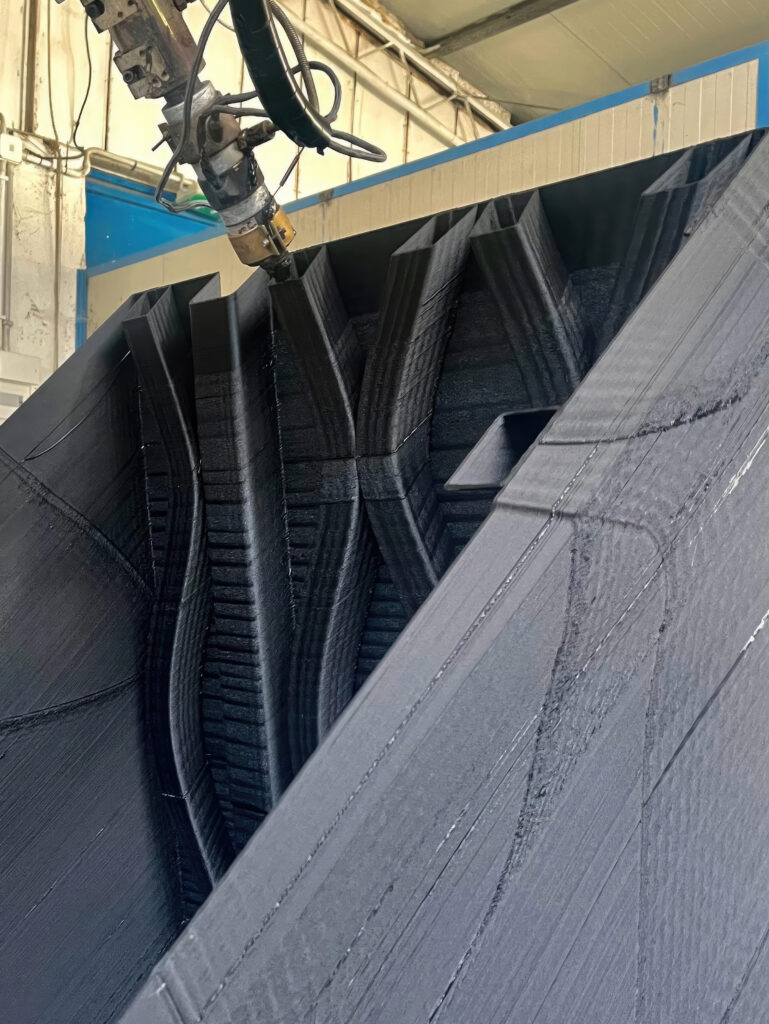
One of your research areas focuses on circular economy design and recycling. How is this approach practically applied in the maritime sector?
The nautical sector is not yet at the forefront. Some things have been done, but there is still a long way to go. Sustainability in this sector focuses on optimising individual components using engineering methods. We initially followed this method too.
Approximately ten years ago, my research in this field emphasised specific materials, including antifouling coatings and bio-composites. Our objective was to replace glass or carbon fibres with natural alternatives. However, this approach proved insufficient. We need a broader, more systemic vision that considers the entire lifecycle of boats and their components. Our research group is working on this topic, including a PhD project focused on life cycle design in the nautical sector. Funded by the National Recovery and Resilience Plan, this project includes Sanlorenzo shipyard, a leading yacht manufacturer and pioneer in hydrogen-powered boats.
Together with designers and shipbuilders, we are establishing guidelines for the Life Cycle Assessment (LCA) of boats. The main problem is that a yacht is a complex system, composed of many elements. Conducting an overly detailed analysis runs the risk of becoming outdated before its completion, due to the rapid pace of technological advancements.
We are working with Politecnico di Milano’s LeNS lab, specialised in sustainable design, to create a comprehensive yacht lifecycle analysis method. The most environmentally impactful stage is navigation, particularly for traditional motor yachts. However, for sailing boats and vessels powered by alternative fuels, the environmental footprint is lower, requiring different sustainability strategies.
Concurrently, we are working with the Water Revolution Foundation, an organisation that promotes sustainability in the large yacht industry. The goal is to pool resources and establish a shared methodology, as the yachting sector is a niche industry where professionals are well connected, and two contrasting forces coexist – a strong commitment to tradition alongside a drive for innovation.
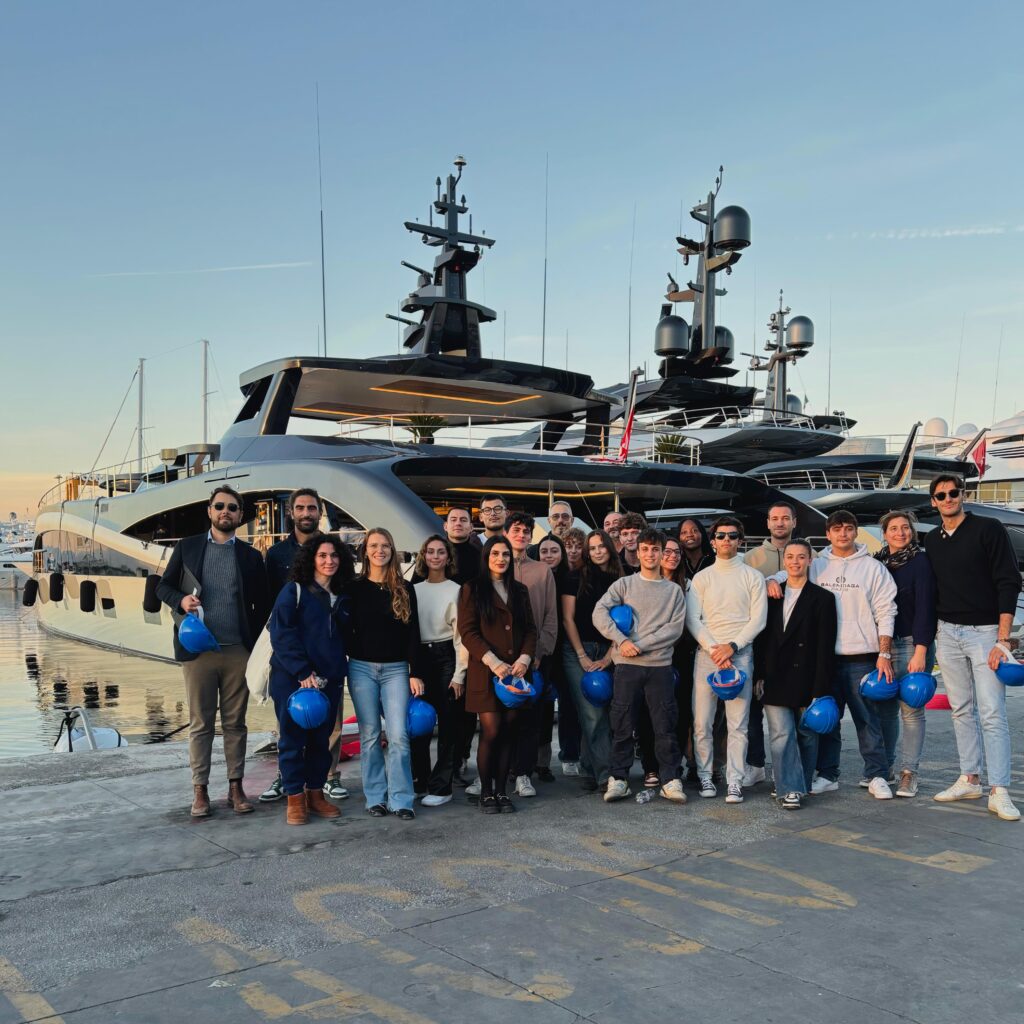
What are the most cutting-edge technologies and materials in yacht design?
One of the most exciting advancements in yacht design is the application of large-format 3D printing to boat construction. This technology uses fibre-reinforced composites, unlocking new possibilities, particularly for producing deck and boat fitting components. These components need significant customisation while ensuring advanced mechanical properties. Unlike hulls, which are subject to strict structural constraints, these elements provide greater design flexibility.
Additive manufacturing enhances customisation and enables shape and structural optimisation. We are using AI to find optimal paths and topologies for maximum structural efficiency. This approach transcends the conventional composite logic, facilitating innovative design and manufacturing possibilities via advanced large-format 3D printing techniques.
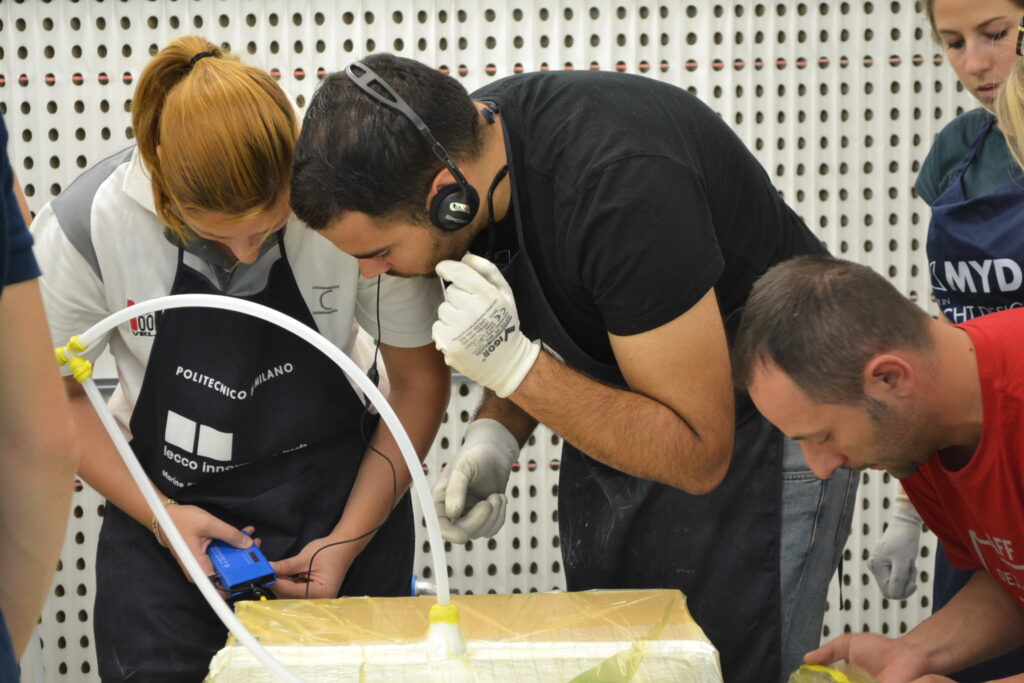
How is digitisation affecting yachting and yacht design?
Since the pandemic, digital technologies have significantly advanced and are now commonly used onboard. Numerous academic and industry-led research projects have been launched to develop tracking systems for onboard equipment and navigation. Progress is also being made in autonomous driving, though challenges in cybersecurity and data protection persist. Given that vessels operate in extreme conditions, they must be capable of navigating and troubleshooting independently, without relying entirely on remote connectivity.
In just a few years, the way we navigate has been transformed. This rapid technological evolution has significantly reduced the industry’s initial scepticism towards digital innovations, which are being embraced with increasing confidence. An example is using hydrogen – five years ago, it was unimaginable, but now it is a reality. There is a disparity between the pace of technological advancement and industry’s readiness to incorporate it, highlighting the essential role of universities. Research centres are crucial in studying these innovations from their early stages and steer their development to address real-world challenges in the shipbuilding industry.
An example is 3D printing for boats – a year and a half ago, it was met with scepticism, yet today, industrial partners are seeing such high demand for customised production that they are struggling to keep up. The sector is evolving at an astonishing pace, and within a year, we may already be discussing an entirely new technological landscape.
Politecnico di Milano engages in research and teaching on nautical design and has a team that participates in international sailing competitions – the Polimi Sailing Team. Can you tell us about the team and your role?
The Polimi Sailing Team designs and builds boats to compete in international regattas. As the team’s project manager, I help coordinate a diverse group of students from across different disciplines at Politecnico. The team brings together students from architecture, design, and engineering, offering them a unique opportunity to independently oversee all project aspects – design, construction (site management, material recovery, supplier management), finance, sponsor relations, and the competition’s sporting side.
This hands-on experience is invaluable, particularly in honing problem-solving skills, as boats frequently encounter technical issues during testing. For me, education extends beyond the classroom – being able to apply theoretical knowledge in practice is incredibly important. I was once a student in the team, joining in my second year at university. Now, I take great pride in seeing experienced students grow and take on leadership roles within the team.
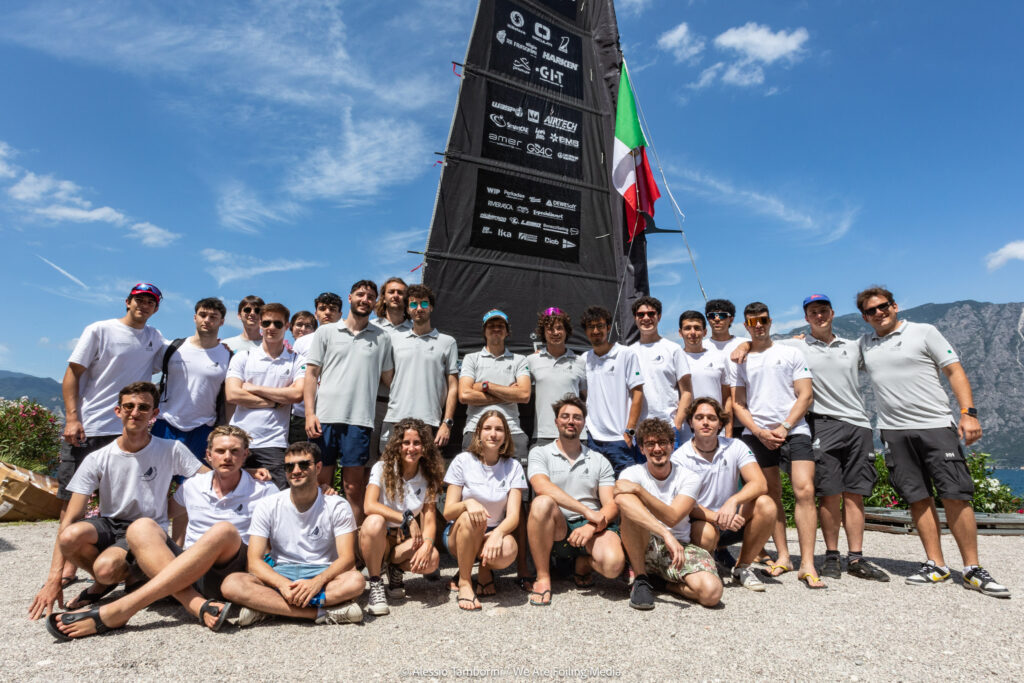
What are your future ambitions?
One of my main goals is to further develop an ecosystem-based approach to innovation and sustainability. A boat is a complex product – the materials and components onboard vary greatly, from the steel plates that form the hull to the leather covering the sofas. The balance between functional needs and aesthetic design is equally intricate. The time has come to consider vessels in their entirety and throughout their life cycle. There is still much to be done, especially in the construction and decommissioning phases.
My dream as a designer and architect is to research the ergonomics of living spaces and emphasise the human factor onboard. This research has implications beyond nautical applications, impacting the well-being of individuals in any moving vehicle or living space. Motion sickness affects people travelling by train, car, or even astronauts during space missions. Exploring the nautical industry is simpler because it is a small, luxury sector benefiting from significant industrial research.
